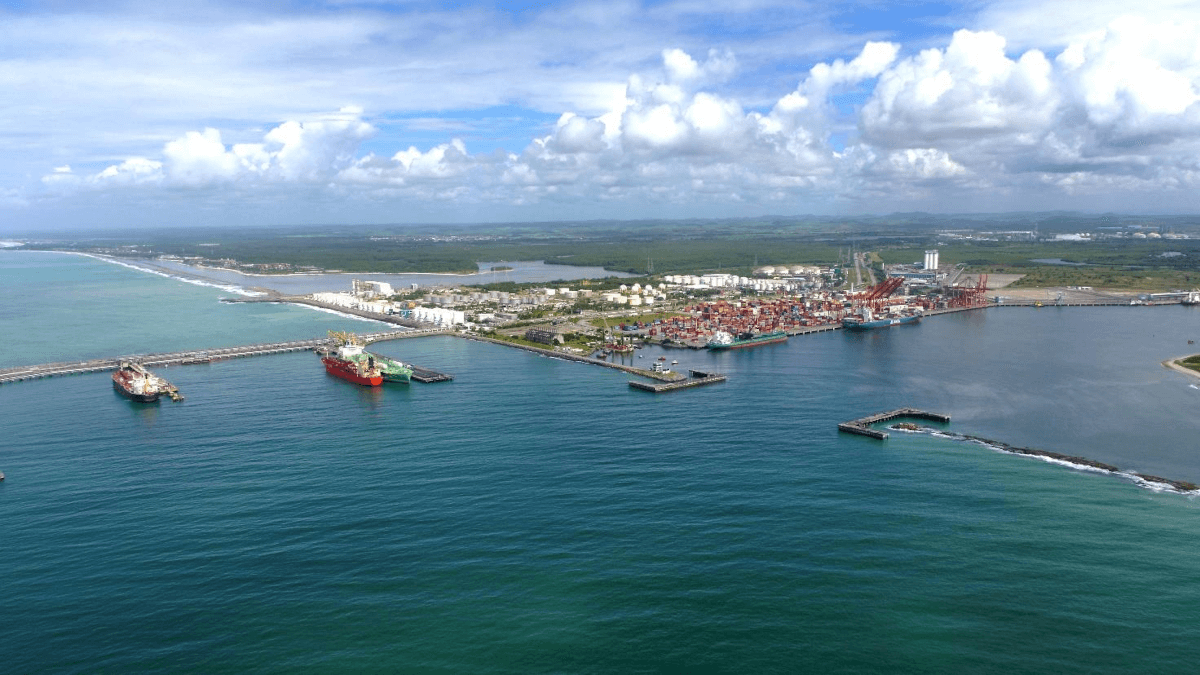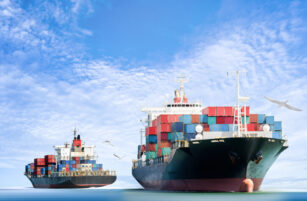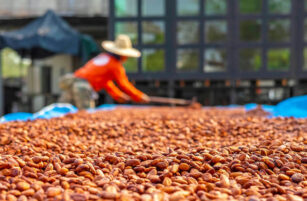Insight Focus
- The Northeast accounts for almost 83% of renewable energy generation capacity in Brazil.
- Port of Suape launches an innovation hub in partnership with the private sector.
- Large-scale production is expected only in the long term.
Northeast Brazil is responsible for 82% of the country’s solar and wind energy generation capacity, at 27.8 gigawatts (GW). It is therefore not surprising that the region is also attracting interest in the production of green hydrogen, obtained from the electrolysis of water carried out using renewable sources.
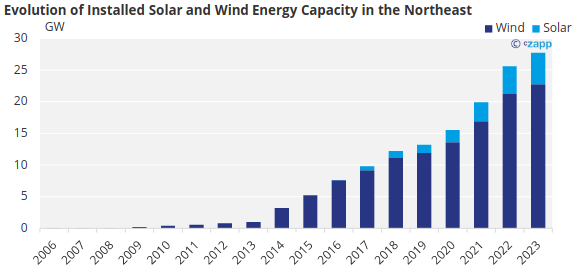
Source: ONS
Ports such as Suape, in Pernambuco, and Pecém, in Ceará, are moving to raise funds and structure hydrogen production projects, targeting the domestic market and exports.
Companies from countries such as Australia, Holland and France announced investments of USD 21 billion in the development of green hydrogen plants in the port of Pecém. The port of Suape, which brings together 82 companies from sectors such as bulk liquids and gases, energy, petrochemicals, food and beverages and pharmaceuticals, is developing a green hydrogen innovation hub together with Senai and the private sector. The intention is to implement technologies to reduce manufacturing costs for equipment such as electrolysers, in addition to creating solutions for storage.

Source: Antaq
“It could be that we are facing a great opportunity to take our country to another level thanks to renewable energies, including hydrogen”, says Marcio Guiot, CEO of the port of Suape, in an exclusive interview with Czapp. Read the main excerpts below.

Marcio Guiot, director-president of the port of Suape. Publicity photo.
How important should green hydrogen be for the energy transition?
There are great expectations, mainly from Europe, but there are still questions to be answered. I was in the UK recently, at the invitation of the British government, along with representatives from other Brazilian ports. We had the opportunity to visit the port of Aberdeen, in Scotland, which has an advanced green hydrogen import plan. But there is still much being studied, including in relation to different types of electrolysers and ways to make the production process increasingly cheaper. There are also many research and development projects.
Did you talk about partnerships during this visit?
It is part of our strategic plan to structure partnerships. We met a lot of players during this trip, but we didn’t get to establish partnerships. It served to exchange experience. The UK is moving forward and is expected to use green hydrogen in public transport, for example, albeit still on a small scale. But the cost is still too high.
Regulation is another important issue, isn’t it?
Yes. The issue of public policies is part of this theme, including technical safety standards, how to handle and store the product. There is still a question mark over how the hydrogen will be exported. How will it be transported, for example from Suape to Europe? Today, what is talked about is ammonia. It´s necessary to convert hydrogen into ammonia. And there is a loss in that process. Regarding large-scale production, all these distribution issues are being looked at. Anyway, it’s a very hot topic and we are very attentive and interested, albeit cautiously.

Port of Suape. Publicity photo.
When should hydrogen transport take place on a large-scale?
Probably eight or ten years from now. But our planning is going strong, to take advantage of these opportunities. The port of Suape is expected to grow five times in size in the coming years and part of this potential can be directed towards green hydrogen. We also have blue hydrogen and other forms of renewable energy that will be equally explored.
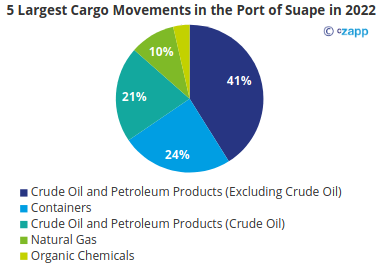
Source: Antaq
Are there issues related to technology, including lowering costs, that also need to evolve?
Yes. Transport is also a challenge. There are already recently manufactured ships that are hybrids, which can operate on liquefied natural gas (LNG). Most, however, continue to operate as bunkers because there is no gas supply in the various ports where these ships dock. With hydrogen, there are also issues that will need to be addressed. Anyway, we expect to export green hydrogen. Brazil is to renewable energy what the United Arab Emirates is to oil. We are the renewable energy mecca because of the cost. Our hydrogen will probably be much cheaper than that produced outside Brazil.
Why?
To electrolyze water and produce hydrogen, a clean matrix is needed. Today, our matrix is already clean. There is no need to make large investments, unlike what happens, for example, in more developed countries.
At the same time, countries like the United States are implementing subsidies to manufacture green hydrogen. How do you see these discussions in Brazil?
I would say that in the beginning it is fundamental to have some kind of incentive for the market to develop. Perhaps in Brazil the subsidy will be lower because we already have a privileged situation. We have a very large onshore potential in the Northeast, for example, with wind energy. And the cost of onshore is much lower than offshore. Here in Pernambuco, we have sun all year round. Imagine filling the backlands with solar panels. What we are looking at here is also the potential of using renewable energies to attract industry. In Brazil, we may be facing a great opportunity to take the country to another level due to renewable energies.
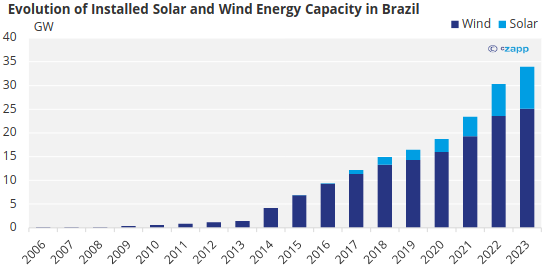
Source: ONS
As Brazil is competing with other countries in the production and export of green hydrogen, we need to assume a certain role in this matter, don’t we?
I always say that there is sun and wind everywhere, to a lesser or greater extent. The difference is how much you pay to produce renewable energy. The cost of production is the big leap for Brazil to become one of the meccas of renewable energy. The idea is that hydrogen arrives in Europe at cheaper prices than the one that will be produced on the European continent itself. But that depends on incentives and other issues. In Europe, energy security has become a strategic issue since the war in Ukraine, so European countries are likely to invest in public policies and subsidies to generate more energy.
It is also important to reduce storage costs at ports, isn’t it?
Yes. There’s a lot being studied. That’s one of the reasons why we’re at the TechHUB, which is an innovation center focused on green hydrogen. Today, the discussion around hydrogen is more concentrated in the academia. We are going to have projects here at the port, together with Senai and the private sector, for storage and production.
Can you talk more about these projects?
There will be several types of projects, carried out in the port, exploring the entire chain. We will interact with industries already established in Suape to find out how they intend to use hydrogen and try to help them through the structure of the innovation center that we are setting up. The objective is to serve the complex of port companies, at first. It is important to remember that green hydrogen is inserted in a context of decarbonization, so we will have renewable energy projects in general.
Does Brazil need to be more proactive in the production of low-carbon hydrogen?
The initial question is how to apply hydrogen in the various production chains. That’s what we’re seeing in the port right now. The idea is how to supply the industries already installed here and how to collaborate so that the country is carbon neutral. Europe is adopting a new legislation that will penalize the import of food produced in violation of ESG standards and deforestation. It will be important for Brazil to position itself as a carbon neutral production country. Brazilian products could arrive more competitively at their destination, be it Europe, the United States or Asia. The horizon for Brazil in terms of decarbonization is fantastic. That’s why I hope, as a Brazilian, that the country actually manages to capture this in the best possible way.
